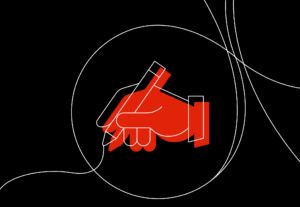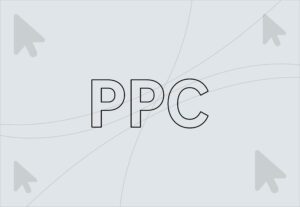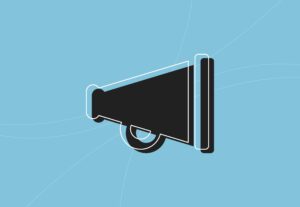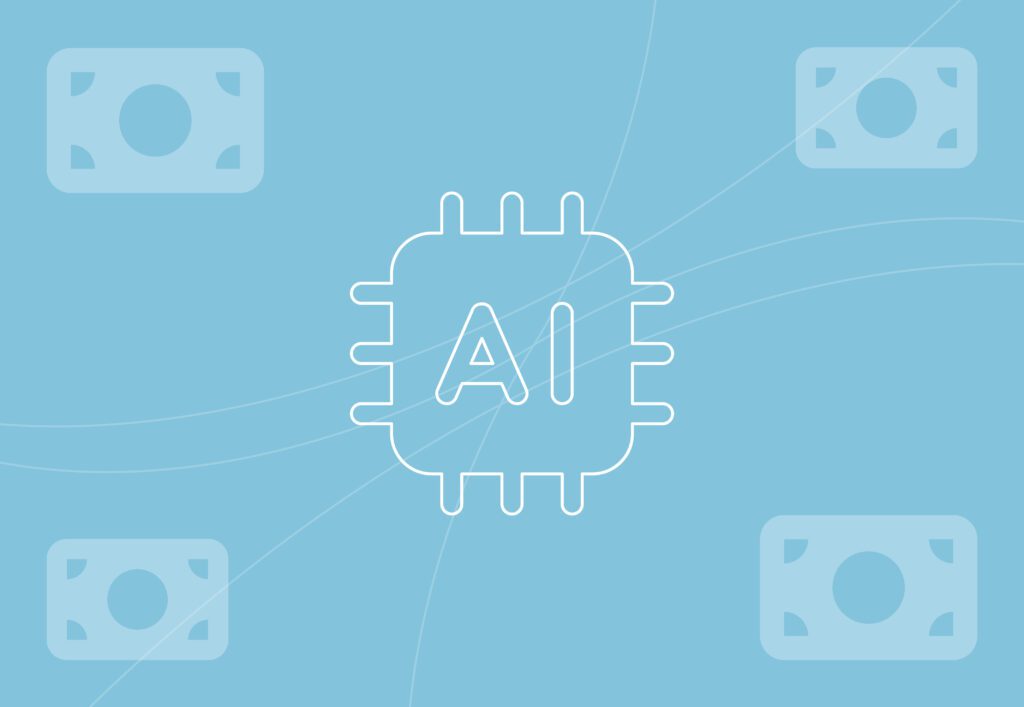
Top 60 digital marketing questions answered

The industry of digital marketing is always changing, and with that, marketers need to stay ahead and keep up to date with the latest trends, strategies and best practices. However, with the pace the industry is evolving, it can be tough to keep up and know where to gain your insights and answers.
Fortunately for you, in this blog, we’ve taken 60 of the most relevant questions you might have about digital marketing, categorised them into services and given you the answers from our award-winning experts.
So before you dive in, we recommend bookmarking the page as we know this will be a valuable resource you’ll want to keep coming back to, just like our industry updates page. Also, once you’re done, if you still have questions unanswered, we’d love to know so we can add them to this post for others, or even provide a further analysis and explanation that could be more bespoke to you and your business.
SEO (Search Engine Optimisation)

SEO is all about increasing your online visibility of your brand and, most importantly, your website. Over 90% of traffic comes from the first-page search engine results, so you need to know all you can to get your website there.
To help with this, we’ve broken questions down into: technical SEO, on-page SEO and off-page SEO.
Technical SEO:
1. What is the purpose of a robots.txt file, and how does it impact crawling?
This is a plain text file that is located in website code, enabling it to communicate with web crawlers like Google to tell it which parts of the site they are allowed or not allowed to crawl. By not including it on pages you can prevent crawlers accessing specific files or directories which might be private. However, it’s important to realise that robots.txt is a request and not an enforcement, so disallowing a page doesn’t prevent it from being indexed if the page is linked elsewhere.
2. Explain the difference between a 301 and a 302 redirect and their SEO implications.
Redirects are used to send users and search engines from one URL to another if pages aren’t available. The two most common types are 301 and 302. A 301 redirect is a permanent redirect and indicates that the original URL has been permanently moved to a new location. By using the redirect you can help preserve the SEO value of the original page including rankings and authority.
A 302 redirect is a temporary redirect used for a URL that might be temporarily unavailable and therefore directed to a new URL. Search engines understand this is a short-term fix or solution and therefore doesn’t pass the link equity of rankings and authority onto the new URL. Instead they will keep the original URL in their index and expect it to return. This should only really be used for situations such as A/B testing, seasonal promotions or when a page relates to a product or service that isn’t currently available.
3. How does site speed affect SEO, and what tools can be used to measure and improve it?
Site speed or page load speed is a critical ranking factor for SEO, as it falls within Google’s guidelines on user experience. This is because a site that loads faster is less likely to be abandoned by a user which leads to lower bounce rates and higher engagement. There are a number of tools that can be used to measure it, including Google’s PageSpeed Insights, GTmetrix and the Core Web Vitals report within Google Search Console.
4. What is an XML sitemap, and why is it important for SEO?
An XML sitemap is a file that lists the URLs of a website, providing search engines with a structured way to discover and crawl a website and its pages. It’s important for SEO as predominantly it improves discoverability, provides faster indexing and enables error detection as Google Search Console can monitor for any crawl errors, helping you to identify and fix issues.
5. Describe the concept of “crawl budget” and how to optimise it.
A crawl budget is the number of pages search engine crawlers can and want to crawl on a website within a timeframe. Factors that influence a crawl budget include:
- How many resources the bot is willing to dedicate to crawling your site without overwhelming your server.
- The crawl demand, popular and frequently updated sites tend to have a higher crawl demand.
- How big your site is, the bigger the site, the higher the crawl budget.
- The health of a site, with those deemed ‘healthier’ due to fast load times and no errors, gets more efficient crawling.
The best way to optimise your crawl budget is ensuring that crawlers spend their time on the most important and high-value pages on the site, rather than on what might be more trivial pages or content. Maintaining SEO best practices can also help with this, ensuring that you have a good site speed, a clear sitemap, fix broken links and remove duplicate content.
6. How does structured data (Schema markup) influence search engine understanding and SERP features?
Structured data or Schema markup is a format for providing information about a website and its content, and is embedded in the HTML of a page. It influences search engines and SERP features as it provides an enhanced understanding of the context of the content. For example using Schema makeup on £19.99 tells Google this is a price and not just a random number. This information then enables SERP features with rich results or rich snippets to make a listing stand out and increase visibility, CTR and a better user experience.
7. What is canonicalisation, and why is it important for preventing duplicate content issues?
This is the process of selecting the ‘best’ or ‘preferred’ version of a piece of content, when multiple URLs exist and link to the same or very similar content. It’s important to use to prevent duplicate content issues which can:
- Waste crawl budget
- Confuse ranking signals
- Provide a poor user experience
By implementing a canonical tag in the HTML header of a page you are telling search engines that this page is essentially a copy and the original content can be found at another URL.
8. How do you identify and fix crawl errors in Google Search Console?
To identify crawl errors in Google Search Console (GSC) you need to follow the steps below:
- Sign in and select the website you want to examine
- Navigate to ‘Indexing’>’Pages’
- Look for ‘Not indexed’ within the pages report. You’ll then see a section ‘Why pages aren’t indexed’, and by clicking on these you’ll see the specific error types.
- Click on each specific error type to see which URLs are affected by that particular error.
The type of fix you need depends on the specific error itself and you can find more information about this online by searching the error you’re experiencing, or by asking a technical SEO for help. This is something our team can assist with, so get in touch if you have more questions.
After fixing, click the ‘Validate Fix’ button in the GSC report and this will notify Google that you’ve fixed the problem and to recrawl the site to verify the fix has worked.
9. What are the core web vitals, and how do they impact SEO?
Core Web Vitals are three specific metrics that Google uses to quantify the user experience of a website and its pages. The metrics focus on loading performance, interactivity and visual stability. They are a significant ranking factor, especially for mobile search. They mainly impact SEO as they directly translate to a better user experience, therefore users are less likely to leave a fast, stable and responsive website, and engagement rates are higher. These are then both signals to Google that this is a site to favour in search results.
10. What is Hreflang, and when should it be used?
A hreflang is a HTML attribute that tells search engines about different language or regional variations of a webpage. Therefore, it helps the search engines to know which is the correct version of a page to show a user based on their language and location preferences. You should use a Hreflang when you have:
- Multilingual websites
- Multi-regional websites
- Combination of language and region
11. What are common technical SEO issues for e-commerce sites?
E-commerce websites can be complex for SEO due to their size, dynamic content and product-centric structures. Some of the most common SEO issues include:
- Duplicate content: with various product variations, faceted navigation and internal search results can create thousands of duplicate or near-duplicate URLs. This can waste crawl budget and lead to keyword cannibalisation.
- Poor site speed: Large product images and videos tend to make e-commerce sites slow, which can impact Core Web Vitals and cause customers to leave the website.
- Products going out of stock or being discontinued: When products are no longer available sites often return 404s which can frustrate customers and lead to wasted crawl budget.
- Poor internal linking structure: insufficient internal linking between category and product pages can lead to important pages not being discovered or ranking lower in the SERP.
By addressing these technical SEO issues, e-commerce sites can improve their visibility and drive sales.
On-page SEO:
12. How do you conduct keyword research for a new campaign?
To conduct thorough keyword research for an SEO campaign we suggest following this seven-step process:
- Identify your target audience and business goals, so you know who you’re trying to reach and what you want to achieve.
- Brainstorm core keywords that relate to your product, service or industry. For example if you’re a coffee shop then you might use ‘coffee’, ‘latte’, and ‘coffee beans’.
- Use keyword research tools, such as Google’s Keyword Planner or Ahrefs, to expand on your list of keywords. Looking at metrics such as search volume, keyword difficulty and related keywords.
- Analyse search intent, not all keywords are equal and you should group your keywords by intent. The groupings are informational, navigational, commercial and transactional.
- Identify long-tail keywords; these tend to be longer and more specific phrases but often as less competitive due to the lower search volume, but still high conversion rates.
- Analyse competitors to see what keywords they are ranking for, there are tools such as our Supertool Intermingle which can help you identify their top-performing pages for keywords.
- Organise and prioritise your keywords based on their intent and relevance to content.
13. What are the key elements of a well-optimised meta title and description?
Your meta title and description are really important for providing information and context so you can attract clicks from the SERP. Some top tips for optimising them are:
Meta title:
- Aim for 50-60 characters in length
- Use your primary keyword as close to the beginning as possible
- Give each page it’s own unique and accurate title
- Use action orientated words where appropriate, such as ‘learn’, ‘buy’ or ‘discover’
Meta description:
- Aim for 155-160 characters in length
- Write a compelling description that encourages users to click
- Include keywords but not too many, it should still read naturally
- Summarise the content to educate the user on a clear idea of what to expect from the page
14. How do you use header tags (H1, H2, etc.) for SEO?
Header tags give structure to your content and help search engines understand the hierarchy and structure of your page.
- The H1 tag is the most important, and a page should only have one H1. Think of it as your title and try to include the primary keyword.
- H2 tags should be used to break up your content into major sections, think of these as your chapter titles of a book.
- H3 tags and onwards are used to help further subdivide H2 sections, and create a logical nested structure of your content.
Overall, the structure you use should create a clear-to-follow outline of your content, enabling users and search engines to quickly understand the main topics and context between them.
15. Explain the importance of internal linking and how to implement it effectively.
Internal linking is the practice of linking from one web page to another. It’s beneficial for on-page SEO as it improves user navigation, helping users to find relevant content and staying on your website. This also helps search engines to discover content and establishes a content hierarchy.
To implement it effectively you need to use descriptive anchor text (the clickable text) and ensure it’s relevant to the page you’re linking to. When linking it’s important to link to a variety of pages and don’t overdo things, links should be natural and helpful to the user, not just inserted for the sake of it.
16. How do you optimise images for SEO (alt text, file names, compression)?
There are a number of ways you can optimise your images for SEO purposes, we recommend:
- Using descriptive file names, not just ‘IMG_124’
- Include alt (alternative) text that is descriptive and relevant, helping search engines and those with accessibility requirements to understand what the image is about.
- Compress the size, large images can slow down websites. You should be aiming for a file size of 100KB or less.
- Resize images to the required dimensions; don’t just rely on the CSS to shrink it.
17. How do you optimise for local SEO?
Effective local SEO is about optimising your website to attract more traffic and business from local customers. Ways you can do this are:
- Claiming and using your Google Business Profile
- On-page optimisation by creating location pages and embedding a Google map on your contact page or location pages
- Use local citations such as Yelp and TripAdvisor, again making sure your information on these pages is consistent with what you have on your website and Google Business Profile.
- Build backlinks from other local businesses and websites, this shows that you’re a legitimate and active company within a community.
Off-page SEO:
18. What are some ethical link-building strategies?
Ethical link-building strategies focus on earning links rather than buying them. By gaining links this way your website builds genuine relationships that can lead to long-term SEO success. Ways to do this are:
- By creating high-quality and useful content that other websites will want to share and reference.
- Guest blogging on high-quality blogs that are relevant and authoritative within your industry.
- Using Digital PR to reach out to journalists and influencers with compelling stories or valuable data that they’ll feature and then link back to your site.
- Source unlinked brand mentions with tools and then reach out to the authors of those sites for a link where they have mentioned you.
19. How do social signals indirectly impact SEO?
Social signals like shares, comments and likes are not a direct ranking factor, however they can still impact SEO. This is because when content is shared on social media it can reach a wider audience which enables more people to see and engage with your content and in turn drive traffic back to your website.
A strong social media presence can also help build brand recognition and trust. This in turn can increase the amount of direct and brand searches which can then help to influence SEO.
Finally, social media can help search engines discover and index new content faster. For example if a new blog post is uploaded, shared and clicked on, it signals to search engines that the page is live and active.
20. What is the difference between follow and no-follow links, and when should each be used?
Follow links are standard HTML links and they tell search engines ‘this is a good link, you should follow it’. Whereas a no-follow link tell search engines to not associate a website with a link and is used to help prevent spam. Follow links should be used for internal links and external links to trusted websites you want to endorse. Whereas no-follow links are for those links which you don’t endorse.
21. What is the role of citations in local SEO?
Citations are mentions of a business Name, Address and Phone number (NAP) on other websites. They help local SEO as they establish trust and legitimacy and improve online visibility and discovery.
22. Explain the importance of brand mentions for off-page SEO.
A brand mention is when your company is mentioned online but without a link. Whilst there is no direct link, they are still important for off-page SEO. This is because:
- Google is becoming smarter at understanding entities and brand authority. So when an authoritative website mentions your brand it’s a signal to Google that your brand is real and relevant even without a link.
- It provides future link building opportunities, where you can reach out to websites to ask if they’ll turn the mention into a link.
- They can increase direct traffic, as users see your brand name and then search for your brand directly, again showing Google that your brand is gaining popularity and trust.
- As part of a natural link profile users and Google would expect to see a mix of linked and unlinked mentions.
Content marketing

With AI developing on a daily basis, content has become more important than ever. Value-first, sales-second content marketing is crucial in building trust with a brand’s audience.
Not only does it help you show up in the SERPs, increasing your online presence, but it also establishes brands as credible, informative and experts within their industry. And it isn’t just about blogs, although they remain a key component of any effective strategy.
From planning to distributing your content through multiple channels, we have answered some of the most frequently asked questions about content marketing.
Content strategy, planning and creation:
23. What is a content audit, and why is it important?
A content audit is a systematic process of analysing a website’s content. It involves creating a comprehensive list of all your content, evaluating the content based on performance metrics, and assessing the quality and relevance of the content.
It’s important to conduct content and SEO audits regularly in order to understand which content is performing well, so you can do more of it, and which content is not performing well so you can improve it. As well as this, you can also ensure that your content is up-to-date, easy to navigate and accurate.
24. How do you map content to the customer journey?
In order to map content to the customer journey you should create content for each stage of the journey, helping to provide the relevant information at the right time. For example:
- Content at the awareness stage should be informational, educational and non-promotional, that is targeted at a broad audience.
- For the consideration stage it should be more specific and solution-oriented that positions your business as a leading solution.
- At the decision stage you want content that is conversion-focused and convinces the customer to choose your product or service.
25. What is E-E-A-T, and how does it relate to content quality?
E-E-A-T stands for Experience, Expertise, Authorativeness and Trustworthiness, and are essentially principles that Google uses to evaluate the quality of a web page. This is because it forms a framework to determine and promote high-quality and helpful content that deserves to be ranked highly.
26. How do you develop a unique brand voice for your content?
To make your content stand out, it should reflect your unique brand voice and personality, sharing content that is important to your business. To develop your brand voice you need to think about:
- What is your brand personality?
- Who is your audience?
- What are your brand voice guidelines?
- Being consistent
- Regularly reviewing and refining
27. Describe the importance of repurposing content.
Repurposing content means taking an existing piece and changing its format so that you can reach a wider audience and maximise its value. It’s important and beneficial to do this as it maximises your investment in the content, helps you to reach more users, boosts SEO and internal linking, and saves time and effort as you use existing high-performing content as a foundation for new assets.
28. What is the role of storytelling in content marketing?
Storytelling can be one of the best ways for content marketers to connect with their audience and inspire action. By telling a story it helps brands build emotional connections with users, makes their content more memorable, and drives action.
29. How do you incorporate calls to action (CTAs) effectively within content?
Incorporating CTAs into content it’s important to make sure that they are clear and action-oriented such as ‘Shop now’ or ‘Download now’. They should also be placed strategically throughout the content and that they are visually prominent by using buttons or formatting such as a different colour of bold text that makes it easier to see. By following this advice you’re more likely to have your content convert and drive the action you require it to. It’s also important to test and further optimise your CTAs and your content’s performance.
30. What is evergreen content, and why is it valuable?
Evergreen content is that which remains relevant and valuable for a long time, rather than dating and no longer useful. Examples of evergreen content are things such as ‘The ultimate guide to building a website’, whereas content which isn’t evergreen is that such as ‘The best marketing campaigns of 2024’.
Evergreen content is valuable as it provides consistent and long-term traffic. It also enables you to repurpose the content in different ways and get more value out of the content.
31. What are the best practices for structuring a blog post for maximum engagement?
At Embryo, we consistently share blogs and therefore we know the best practices for driving engagement. Remember, a well-structured blog is easy to read and understand whilst keeping users on the page longer and encouraging users to engage. Our tips are:
- Have a catchy and descriptive title as this is your first chance to grab the readers attention.
- Use a structure that makes it easy to read and understand
- Incorporate visuals to break up text and illustrate your points
- Include relevant internal and external links
- Ensure content is well written and targeted towards the audience
- Summarise with a strong conclusion and a compelling CTA
Content distribution and promotion:
Social media is a powerful channel for distributing content and expanding your reach. The key thing is to identify the right platform, and not just post everywhere. For example if you’re a B2B business then LinkedIn would be a smart choice of platform, whereas a fashion brand might focus more on Instagram or TikTok.
Once you’ve chosen your platform you need to ensure your content is formatted in the best way to drive engagement, for example on TikTok you’re looking for short-form visually engaging content.
Finally don’t just share content and then leave it, social media is all about engagement and that’s what you should do. Respond to comments, answer questions and join conversations.
33. What are some effective email marketing strategies for content distribution?
Email marketing is a great way to distribute content as you’re communicating with users who have given you permission and want to hear from you. The best ways to distribute content via this channel is to:
- Build a segmented email list: don’t just send the same content to everyone.
- Create a newsletter: this should be sent regularly so your audience knows when to expect it.
- Personalise emails: to engage users more and offer them a more personalised and unique experience.
- Write compelling subject lines: as this is the best way to ensure your emails are opened and read.
- Use a mixture of content: including images and video can help engage your audience without them having to read large amounts of text.
34. How do you encourage user-generated content (UGC)?
User-generated content is that which is created by customers rather than your brand or business itself. It’s a great way to demonstrate social proof, build brand awareness and trust with your audience. You can encourage more UGC by:
- Running a content or campaign
- Creating a branded hashtag for users to use
- Ask for reviews and testimonials
- Feature and credit users when they share UGC
- Create a community that encourages UGC and provides a platform for sharing
35. How do you analyse content gaps in your current strategy?
A content gap analysis helps you identify topics or keywords that are relevant to your audience, but you don’t currently have content for. This can help enhance your content strategy and outrank competitors. There are a range of tools available that will help you to analyse your content, but remember as well as looking at what you do or don’t have, you should also be assessing your competitors content, getting feedback from your audience and customers on what they want to see, researching the industry and mapping content to the customer journey.
PPC (Pay-Per-Click)

PPC, or Pay-Per-Click, is an advertising model that offers fast visibility and traffic. How does it work? In simple terms, you pay a fee each time your ad is clicked.
In a competitive search landscape, PPC helps brands to show up more, target a specific customer base and, ultimately, drive leads or sales. And, with the introduction of Performance Max, AI-driven automation, and more, it’s no longer just about bidding on a set of keywords…
Campaign setup and strategy:
36. Explain the concept of Quality Score and its impact on ad rank and CPC
Quality score is a PPC metric used by Google Ads to measure the relevance and quality of a campaign’s keywords, ads and landing pages. The score is from 1 to 10, with 10 being the highest and a higher score indicates that your campaigns are more relevant to what the user is searching for.
As a metric it directly impacts two aspects of Google ad campaigns: ad rank and CPC. If you have a high quality score then your ad is more likely to have a higher position, even if you have a lower bid, meaning you get more visibility for less money. A high quality score can also lower your CPC as Google rewards advertisers who provide a better user experience, meaning you can pay less for the same ad position.
37. What are the different keyword match types, and when would you use each?
There are three different types of keyword match, let’s look at them in more detail.
- Broad match – the default type that allows your ad to be shown for searches that are related to your keyword, even if they are misspelt, singular and plural forms and related concepts. This type is good to use when you’re trying to reach a wide audience and new campaigns where you’re still learning what search terms are converting.
- Phrase match – this shows your ad for searches that include your exact keyword phrase or close variations of it. It can be used when you’re looking to reach a more specific audience but still would like some flexibility in who you can reach. It’s a good middle ground for driving relevant traffic.
- Exact match – using this match type will mean your ad will only show for searches that are the same as your keyword phrase or close variants that have the same meaning. They are best to use when targeting a highly specific audience and tends to have the highest click-through rate (CTR).
38. What is negative keyword targeting, and why is it important?
Negative keywords are those which you specify in your campaign that your ad shouldn’t be shown for. It’s important as it can improve the efficiency of your campaigns by ensuring that you’re not advertising or paying for irrelevant search queries.
39. What is the difference between manual bidding and automated bidding strategies?
Bidding is the process of setting what you’re willing to pay when someone clicks on your ad.
Manual bidding means that you set the maximum bid for each keyword, and that you have full control. However it can be time consuming and difficult to manage at scale.
Automated bidding is where you choose a strategy based on your goals and Google automatically adjusts your bids in real-time to achieve these goals. This can help save you time but does provide you with less control, so it’s important to understand your data and ensure your campaign goals are correct.
40. How do you determine a suitable budget for a PPC campaign?
Determining a budget for PPC is a critical decision, but not one that can be made easily and by following a set formula. Setting a budget strategically depends on:
- Your business goals and what you’re trying to achieve.
- The industry you operate in – some that are more competitive will have higher CPCs and therefore require a larger budget to achieve results.
- Knowing your customer lifetime value so you can determine a profitable cost per acquisition (CPA).
- Historical data – do you have previous campaigns you can learn from?
- Testing and learning – monitoring your budget and performance can help you scale and drawback when you need to.
41. Describe the importance of ad extensions
Ad extensions are additional bits of information that can be added to PPC ads to make them more useful and appealing to users. These can be additions of extra text, links, phone numbers, locations and more. They are important as they can add more value to your campaigns at no extra cost.
Ad creation and optimisation:
42. What are the key elements of a compelling ad copy?
To help optimise your campaigns and drive ROI from PPC, your ads should include copy that encourages the audience to take action. Key elements of compelling copy include:
- Relevant information that directly addresses the needs or problems of the user searching.
- A clear call to action that tells the user what will happen when they click your ad, such as being able to get a quote, shop now, or sign up.
- Your unique selling point (USP) that gives you the competitive advantage and stands out from the other advertisers.
- Language that promotes emotion and urgency such as ‘exclusive’ or ‘limited time offer’.
43. How do you A/B test ad copy effectively?
A/B testing or split testing involved testing two versions of ad copy and seeing which one performs better. To do this you should create two variations within the same ad group but change one element to test. Let these ads run and then review the data to see which has performed better. When testing it’s best to only change one thing at a time so you understand what exactly it is that is driving the results.
44. What are responsive search ads, and how do they work?
Responsive Search Ads (RSAs) are a type of Google ad that automatically creates and tests different combinations of headlines and descriptions to find the best performing version. They work with an advertiser providing up to 15 different headlines and 4 different descriptions, then when a user makes a search, Google’s algorithm mixes and matches the headlines and descriptions to create the most relevant ad.
Over time the algorithm learns which combinations are most effective for different search queries and prioritises those. As an advertiser you can have some control by having the option to ‘pin’ a specific headline or description to ensure it always appears.
45. How do you optimise landing pages for PPC campaigns?
A PPC landing page is the first thing a user sees when they click your ad, so optimising it is critical for converting clicks into customers. There are a number of ways to optimise your landing pages, let’s take a look:
- Relevance – the landing page content should be relevant to the ad copy and the user’s search query, otherwise you can reduce your quality score and frustrate your audience.
- Fast loading – if your page doesn’t load quick enough or some elements only partially load again you’re likely to frustrate and lose users, leading to high bounce rates and wasted spend.
- Mobile friendly – 60% of searches are happening on mobile devices, so if your landing page isn’t optimised for mobile, you’re losing a large portion of potential customers.
- A/B test elements – just like with ad copy you should test different elements of your landing pages to determine which versions perform best.

As a brand, you can’t just rely on organic reach to drive your presence on social media. A comprehensive paid social strategy ensures that you stay visible, competitive and connected to your audience.
And in a multi-channel approach, paid social can be used to support activity at every stage of the funnel – from building awareness to dynamic product ads and retargeting campaigns. In short, it allows you to reach the right people at the right time, keeping your brand top of mind.
Discover how to test creative, define audiences, and more….
46. How do you define and target audiences on paid social platforms?
Targeting on paid social involves defining specific groups of people you want to reach with your ads and tend to be based around your ideal customer profile (ICP). Different social platforms have different methods of targeting but generally when choosing your audience you look at:
- Demographics like age, gender and location.
- Interests which can include brands they like, hobbies they have and types of content they engage with.
- Behaviours, so based on their purchase history or online browser activity.
- Custom audiences where you use your own customer data to target existing customers.
- Lookalike audiences which are created based on similar characteristics or interests to existing customers or website visitors.
47. How do you set up and track conversions for paid social campaigns?
Tracking conversions is essential to understand how successful your paid social campaigns are. The process usually involves:
- Installing a piece of code (often called a pixel) onto your website that tracks user actions.
- Defining what a ‘conversion’ means for your business and ad. It could be a purchase, download, lead form submission or some other valuable action.
- Using a universal analytics solution like Google analytics to track conversions from paid social.
48. What is a Facebook Pixel, and why is it essential for paid social?
A Facebook Pixel is a piece of code that you install on your website. It then enables you to track a user’s interaction on your website after clicking your Facebook or Instagram ad. By not installing your pixel you miss out a range of data that can help show the value of your paid social activity and can further optimise your campaigns. It’s also a required element to be able to run retargeting campaigns and build lookalike audiences of potential customers who share similar interests and characteristics with your existing ones.
49. Explain the importance of creative testing in paid social
Creative testing is the process of trying different ad variations to see which best resonates with your audience and drives the best performance. It’s important because it:
- Prevents ad fatigue by providing new creative that keep your campaigns fresh and engaging.
- Improves performance as better ad creative can lead to a higher click-through rate (CTR) and a lower cost per click (CPC).
- Uncovers new insights about what really resonates with your audience.
- Optimises for the different platforms, as the same creative won’t work for all.
50. What are lookalike audiences, and how do they work?
A lookalike audience is one that is likely to be interested in your business as they ‘look like’ your existing customers. They work with you providing the ad platform with a list of people that you know are valuable to your business, the platform then analyses the characteristics of the people in this list and then finds new users based on similar characteristics.
Using a lookalike audience is a powerful way to expand your reach and find new potential customers without a lot of manual targeting.
Digital PR

Generating awareness and demand for your brand is just as crucial as converting website users to sales. In fact, you can’t really have one without the other.
That’s where Digital PR comes in.
With relationship building and outreach at it’s core, this marketing channel helps your brand to show up in relevant spaces online and generate high-quality backlinks (also giving your SEO strategy a boost).
But how does it differ from traditional PR? And how do you secure media placements? Find out below.
51. What is Digital PR, and how does it differ from traditional PR?
Digital PR is a form of public relations that uses online channels and digital marketing tactics to increase brand awareness, online visibility and build high-quality backlinks. The key difference between digital and traditional PR is that whilst digital focuses more online, traditional focuses more on conventional media channels such as print, radio and television. Traditional PR can also be difficult to measure, whereas Digital PR can have clear KPIs such as website traffic, social shares, brand mentions and high-quality backlinks.
52. What constitutes a successful digital PR campaign?
A successful Digital PR campaign meets the goals and KPIs, and it can do so by:
- Including unique and newsworthy content that journalists and bloggers want to link to. This could include a data study, interactive tool or a unique visual like an infographic.
- Securing high-quality backlinks
- Increasing organic traffic
- Leading to positive brand mentions on social media or other platforms
- Providing measurable impact to demonstrate a positive ROI.
53. How do you craft a compelling pitch for digital PR outreach?
A compelling digital PR pitch is what will get a journalist or blogger to cover your story or article. To do this it needs to be a unique piece of content that provides value to the reader and also websites the journalists or bloggers manage. When reaching out to them make sure you personalise your message and reference why your story or article is relevant for their audience, showing that you have done your research and not just carrying out mass outreach. If emailing your story, then it’s key to use a strong subject line and get straight to the point with your message, as this will help your pitch to stand out from the crowd and cut through the large volume of pitches the journalist or blogger receives regularly.
54. How do you measure the success of a Digital PR campaign (beyond just backlinks)?
Backlinks are a primary goal of a successful Digital PR campaign but there are other metrics that can also show the success. These include:
- Website traffic
- Brand mentions
- Conversions of leads and sales
Digital strategy

And tying each marketing channel together is your digital strategy…
Whether you are a brand-new business or ready to expand on an international scale, developing a cohesive strategy can be a little daunting.
Using your business and marketing objectives as a starting point, a strong digital strategy will map out how each channel interacts with the other. Then there’s ensuring a seamless user journey, establishing an effective presence at each stage of the funnel and delivering measurable results. Did we mention marketing trends?
As you can see, there is a lot to consider.
This blog is a starting point, but if you’re a business looking to strengthen your online presence and drive results, our expert team can help.
55. How do you develop a comprehensive digital marketing strategy for a new client?
Developing a digital marketing strategy is a structured process that is formed around high-level goals to specific tactical plans. A top-level process we suggest is:
- Discovery and research – This is the deep dive into the business, looking at what makes them unique, where they are positioned within the industry, who their competitors are and what opportunities are available to them.
- Define goals and KPIs – All goals should be SMART (Specific, Measurable, Achievable, Relevant and Time-bound). Then when setting KPIs these are the metrics that will be used to measure success and should contribute to achieving the overall goal.
- Audience persona – create detailed profiles about the ideal customers. This helps the business to understand their needs, pain points and where they are online.
- Channel selection – the information gathered at the other steps such as who your audience is and what you’re trying to achieve, will help determine which channels you should invest your marketing budget into. Once you have your channels, you should then create more granular strategies at a channel level, aligning the activity to your KPIs and goals.
- Execution – apply your strategy and implement your campaigns and required assets.
- Analysis and optimisation – ensure tracking is implemented and your reporting platforms are linked so that you can regularly review performance and identify what is and isn’t working. Then you can optimise and adjust the strategy accordingly.
56. What is the marketing funnel, and how do digital marketing channels map to each stage?
The marketing funnel represents the customer’s journey as they interact with a brand from the start to conversion. It’s divided into three main stages:
- Top of the funnel – this is about making potential customers aware of your brand and offering. Some channels that can help here are SEO, content marketing, organic social and paid media like display ads and brand awareness campaigns.
- Middle of the funnel – here it’s all about consideration and helping customers as they actively search. Channels that help with this are content marketing, email marketing, retargeting, paid media campaigns and influencer marketing.
- Bottom of the funnel – this is where conversions are key, and it’s all about getting the customer to make a purchase or take a final desired action, such as sign up for a demo. PPC campaigns with high-intent keywords, email marketing with direct options and landing pages optimised for conversions are key channels.
57. How do you integrate different digital marketing channels for a cohesive strategy?
Integrating different digital marketing channels is all about ensuring that they work together and complement each other to achieve your goals. To do this you should:
- Use consistent messaging and branding, so that each channel reflects one another and that they are easily identifiable as owned by the same brand by users.
- Map the customer journey and identify which channels are at which stage, ensuring each stage is covered by activity.
- Review data from a centralised analytics platform to track user behaviour and engagement across all channels. Then use data from the different channels to help inform one another.
- Repurpose content across the different channels to amplify reach and help consistency with your messaging.
58. What is customer lifetime value (CLTV), and how does digital marketing impact it?
Your customer lifetime value (CLTV) is a metric that estimates the total revenue a business can expect to generate from a customer throughout their relationship with the business. It’s not about the first sale or individual large purchases, but the customer’s total value over time.
Digital marketing can impact your CLTV in several ways including:
- Improved targeting – by helping you target the high-value customers using paid media with customer match lists or retargeting campaigns.
- Nurturing customer relationships – channels like email marketing and social media are perfect for building relationships and increasing customer loyalty which can increase CLTV.
- Personalisation – as digital marketing allows you to show customers relevant content and product recommendations, making them feel more valued.
- Retention and loyalty – being able to offer exclusive deals, run loyalty programs whilst also running exceptional customer service 24/7 across various channels can help reduce churn and extend the customer relationship.
59. How do you conduct competitive analysis in the digital landscape?
A comprehensive competitive analysis can help you understand who has what share of the industry, and discover your competitors strengths and weaknesses which can further optimise your digital marketing campaign.
To begin with you should identify your direct and indirect competitors and use tools to review them across multiple channels. For example, for an SEO review, use tools like Ahrefs to analyse their website performance, and identify the keywords they are ranking for and where they get their backlinks from. This helps reveal content gaps and link-building opportunities. Whereas for social media you should review what platforms they are on, what’s their following like and their engagement rate. Also analyse what content they are sharing and could your company do something similar?
60. How do you stay updated with the latest trends and changes in digital marketing?
Digital marketing is constantly developing, and therefore it’s imperative that you stay up to date. Some ways you can do this are:
- Our industry updates page where we share regular channel updates as they happen
- Read whitepapers and reports
- Attend webinars and events
- Follow influential marketers on social media
- Subscribe to email newsletters
- Read industry blogs such as HubSpot and Search Engine Land
- Hands on experience by testing new strategies and continuously learning
Conclusion
So, as you’ve seen, that’s quite a comprehensive list and we hope you found it useful and learnt something to enhance your marketing strategy. If you’d like to discuss any of our answers further or have more support to improve the performance of your digital marketing, then contact our team on 0161 327 2635 or by emailing info@embryo.com.



